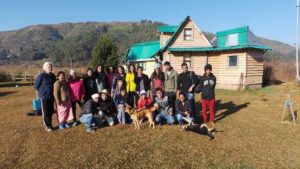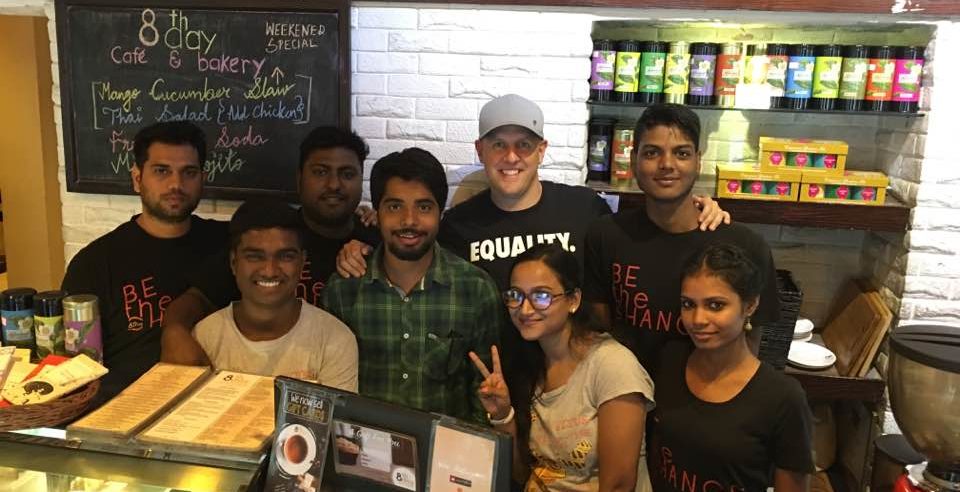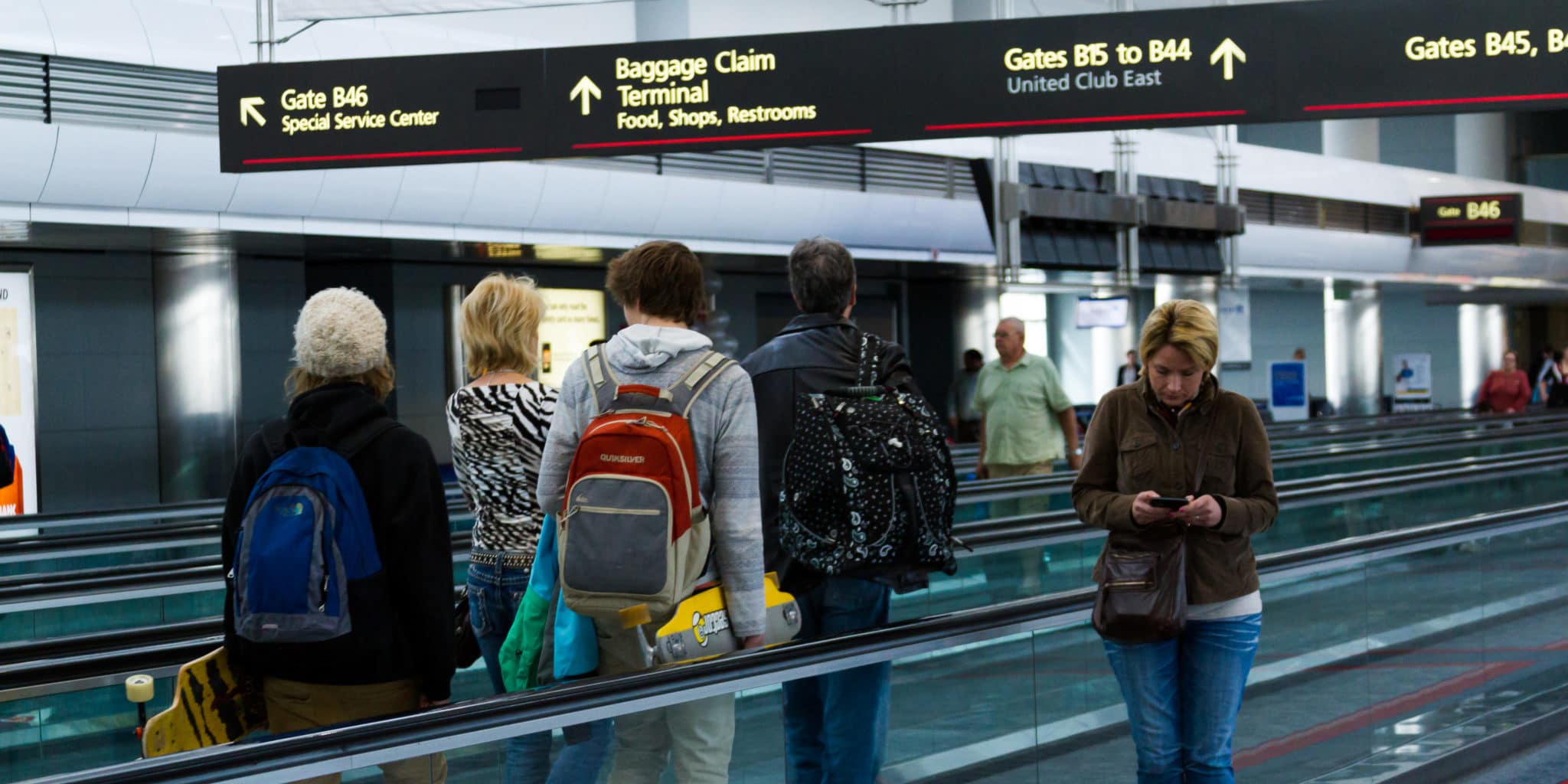Expats
Expat Voice: Meghalaya Musings

James Perry with his wife Valeriena and children
Canadian expat James Perry and his Khasi wife Valeriena run a homestay powered by clean energy in a Meghalaya village.
Twenty five km from Shillong, the capital of Meghalaya, lies a homestay called Maple Pine Farm run by Meghalaya-born Canadian James Perry and his Khasi wife, Valeriena. Right in the bowl of the valley, surrounded by hills and cutting through by streams, the humble homestay is a short trek away from the famous Sacred Groves of Mawphlang, a dense forest protected by the Khasi tribe.
The entrance to the homestay is right after a stream crossing. You can see scattered wooden cabins with green roofs, an isolated yellow room for traditional massage services and windmills and solar panels lining up on one side, generating all the power needed to run the place. You will be greeted by Gunner, their dog and maybe, you will spot Ira, their horse.
Perry, 52 and Valeriena Perry Syiemlieh, 41, are people you would meet over the Khasi-style dinner they prepare for all their guests. The dinner is eaten in the common room, where curated music plays, and a hilarious list of quotes is put on the back of the door. Sample this: “If you get to thinkin’ you’re a person of influence, try orderin’ somebody else’s dog around”.
Perry speaks to Little India about his coming to Meghalaya and the building of the homestay:

How Maple Pine Farm Came About
From 1997 to 2010, I was involved in taking mostly foreign travelers all over Northeast India. At that time there was not much commercial tourism in the region, and Meghalaya in particular. While travelling, I wondered why don’t people think of their own area and offer places to stay instead of waiting for the government to do something. Usually, that means high expenditure with very little benefit to the locals.
The Maple Pine Farm was built this thought. The first cabins were built in 2012-2013 with whatever finances we had.

A group of travelers at Maple Pine Farm
The Project
Starting the project, Valerie and I had no definite final goal. It was based on what happened and what the market allowed. It could have just stayed as a place for our own family to go away to on weekends and people we knew to come and stay. However, with the changing of tourism scenario in Meghalaya, we saw a need to do something different and not preach about it. If people saw what we were doing and wanted to work hard, do something similar themselves, we offer help and advice. The concept is to start small, with what you can handle and let the market dictate expansion.
Tourism in Meghalaya
The tourism scenario of Meghalaya is growing fast and without any plan. It is just catering to the people who are coming. For example, Mawlynnong is called the “cleanest village in Asia”. When the media broke the story, swarms of people rushed to the village, crowded it, looked around and came back to Shillong. Were people of Mawlynnong prepared for this kind of attention? What is the point of traveling to a place when you don’t engage with the local community there? Are the local people on the table when tourism promotions plans are made?
Local communities should be able to decide how they want tourism in the area to be taken forward and how they want to engage with travelers, before they are robbed of the choice in matter.
Challenges on the Way
When we built the first cabin, we had no real capital. We took a risk and many things fell into place after that. The energy took some time to get working properly. We had to understand the limitations of solar, wind energy and storage of energy in batteries. As with any non-conventional system, the storage of energy is an obstacle. But the solar system has been a great help in how we present ourselves and what we do.
Growing Up in Meghalaya
My parents came to Meghalaya in 1963. My father was a math and science teacher, and my mother, a nurse. They were sponsored by church to run a school here. I was born in Meghalaya. I went to the school that my father was the headmaster of. The school was meant for poor people, the language was Khasi, no uniforms were required and education was free. My father would say if the school was not good enough for his own kids, it was not good enough for anybody.
I lived in Meghalaya and then Assam until I was 13 years old.
Journey to Canada and Back
I returned to Canada for high school and university education. It is also where I learnt building. I had no intention of coming back to India to live. Like many things in my life, I mostly just let things fall into place, with a very loose long-term place I wanted to be in. Not a place in terms of material things, but a place in stability and always having a goal of being satisfied.
I visited Shillong in 1995. I was sponsored to run a marathon in Singapore and decided to fly to Shillong from there for a quick visit to my birth place. It was near a transition time in my own life. So again, many things just fell into place without a plan. I came back the next year for longer. I had an attachment to the place. After getting married in 1998 to Valerie in Shillong, we went to Canada for a year. It was more to let her see what my life was like. We then decided to come back to Shillong and make a go for it here.
Learnings from Canada and Meghalaya
It is more something I may have taken from my life in general and my parents — determination, being adventurous and not being caught up in materialism. Many people would say, “You must be rich, you can come here and travel”. I could never make people understand that friends my age could not or did not do what I did because of choice.
My travels have never been about a particular place. It is about the experience. Even some of the supposedly worse experiences can be made positive.
Expat Voice is regular column on expats in India. Email us at expat@littleindia.com to nominate yourself or another expat for the column.



